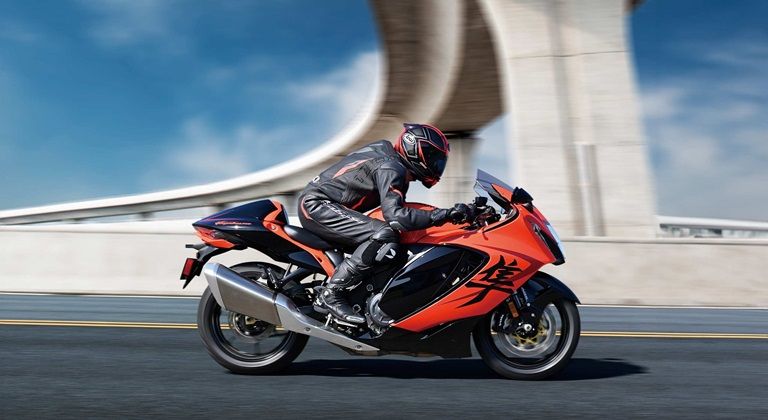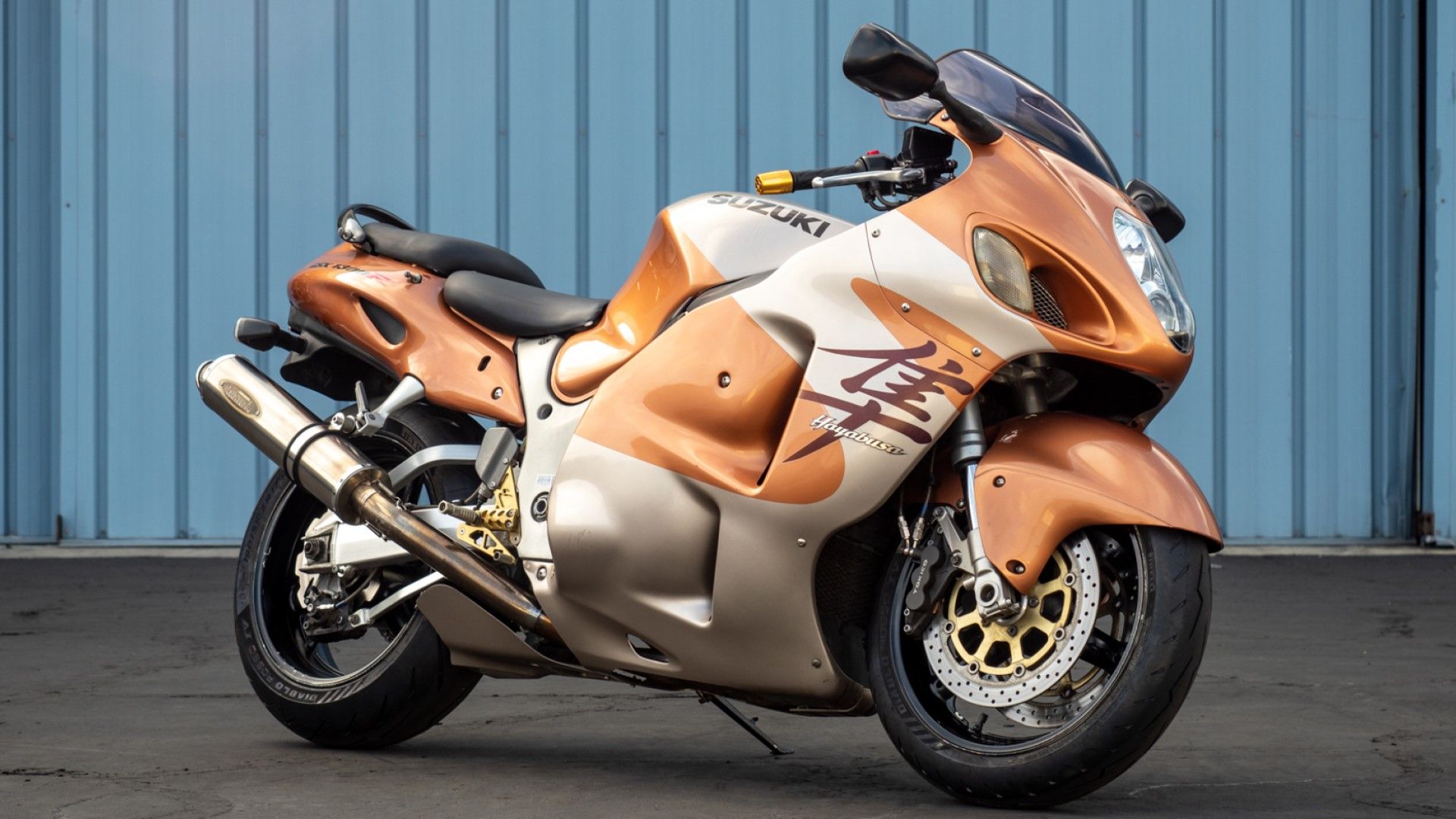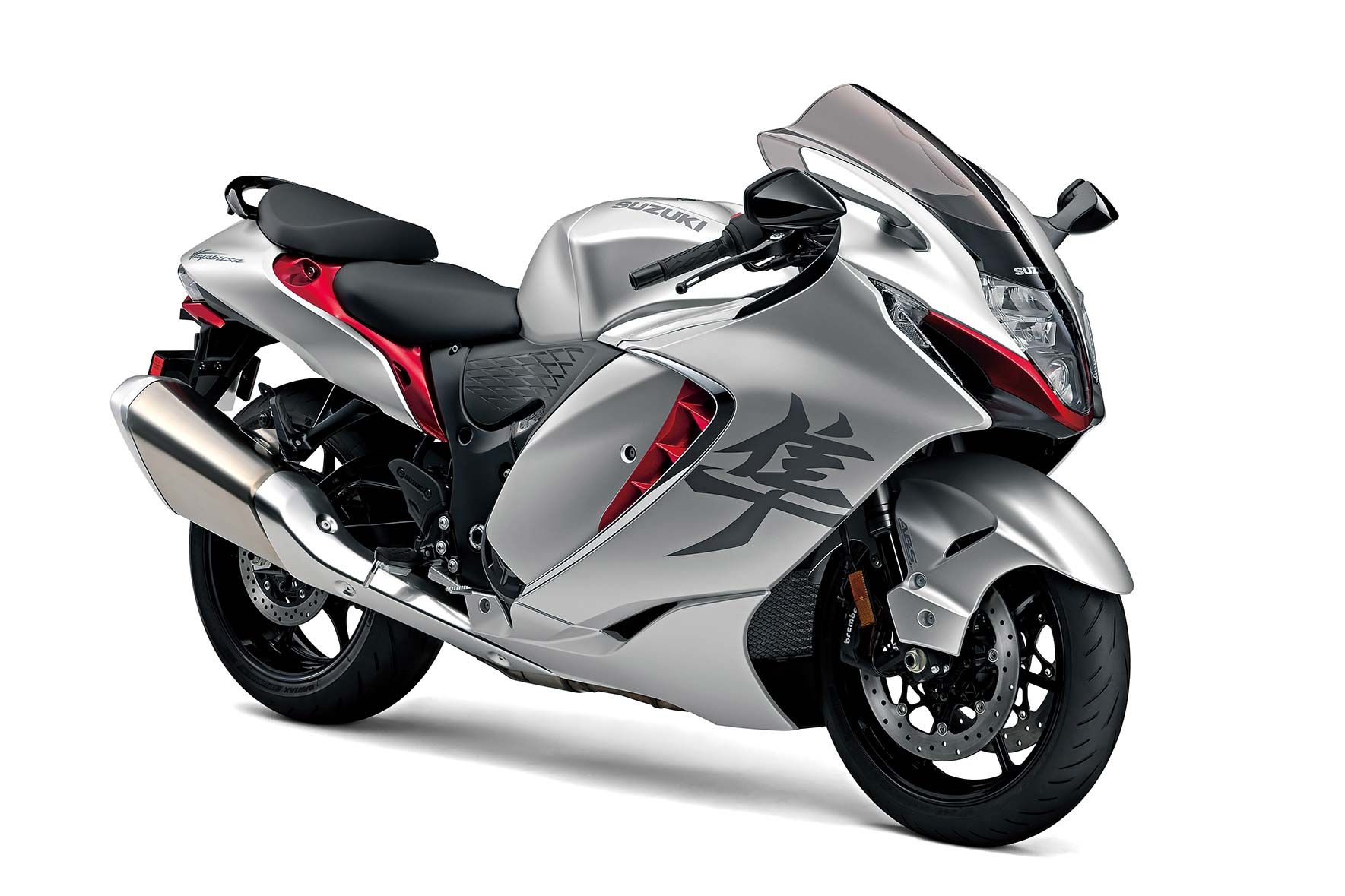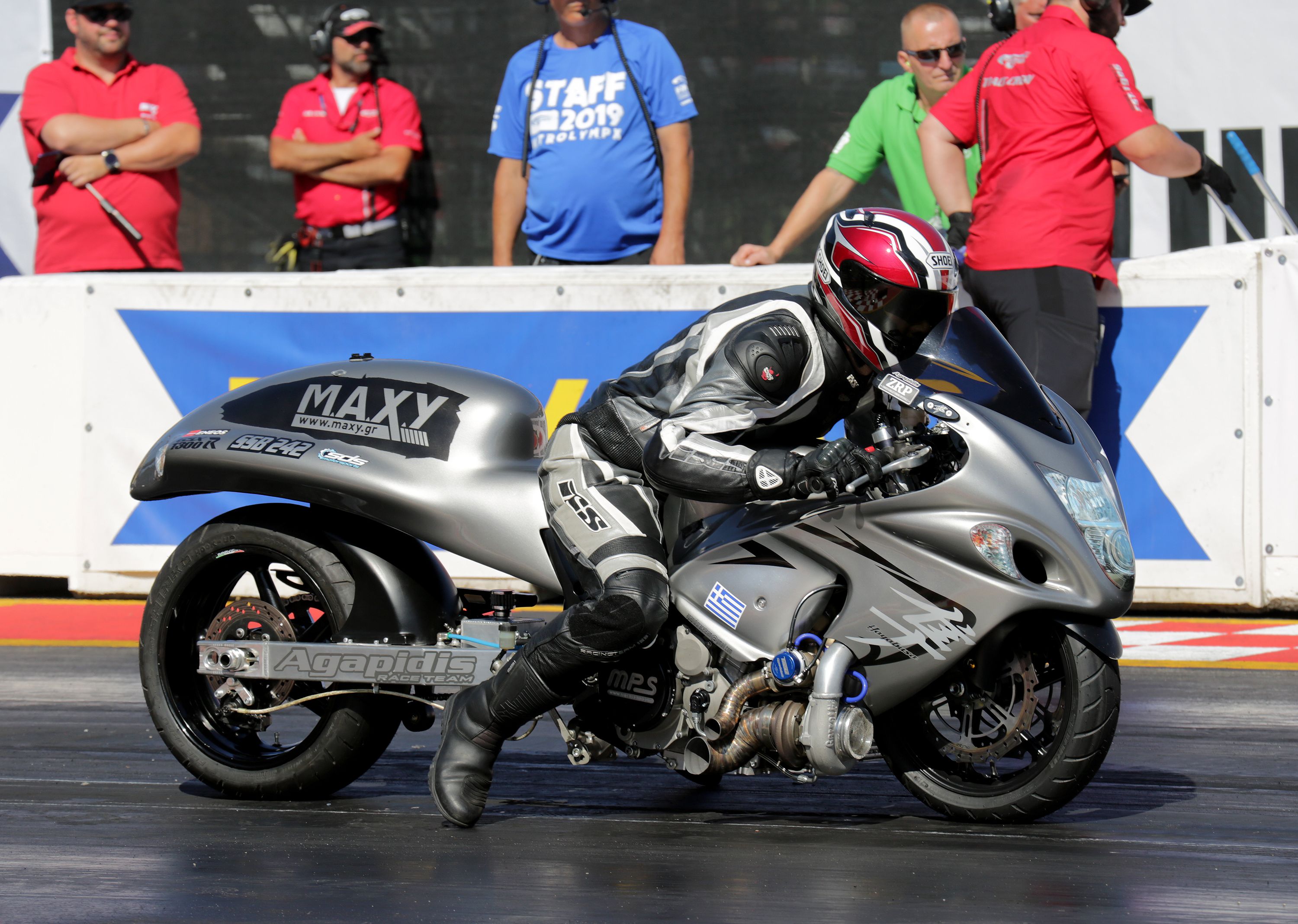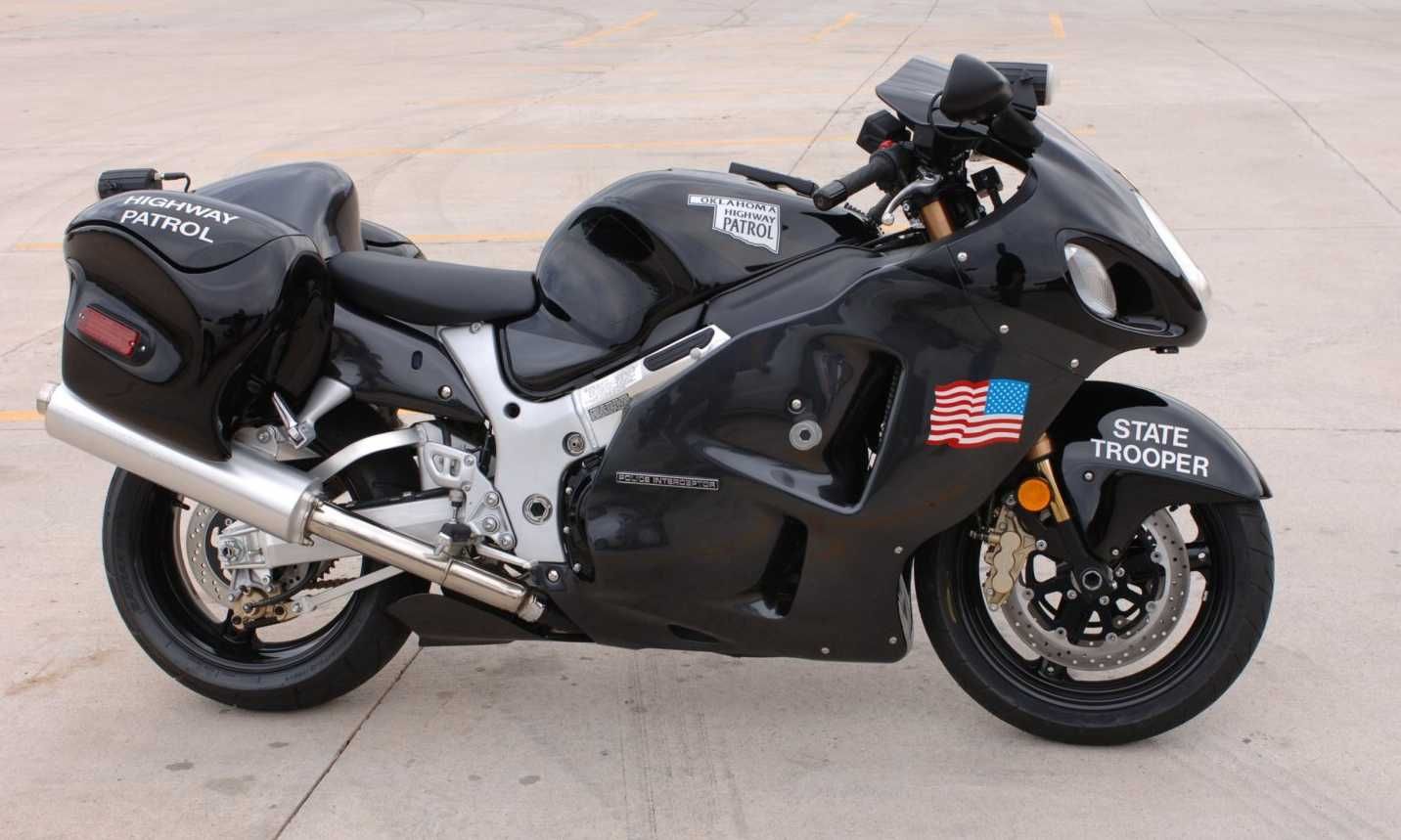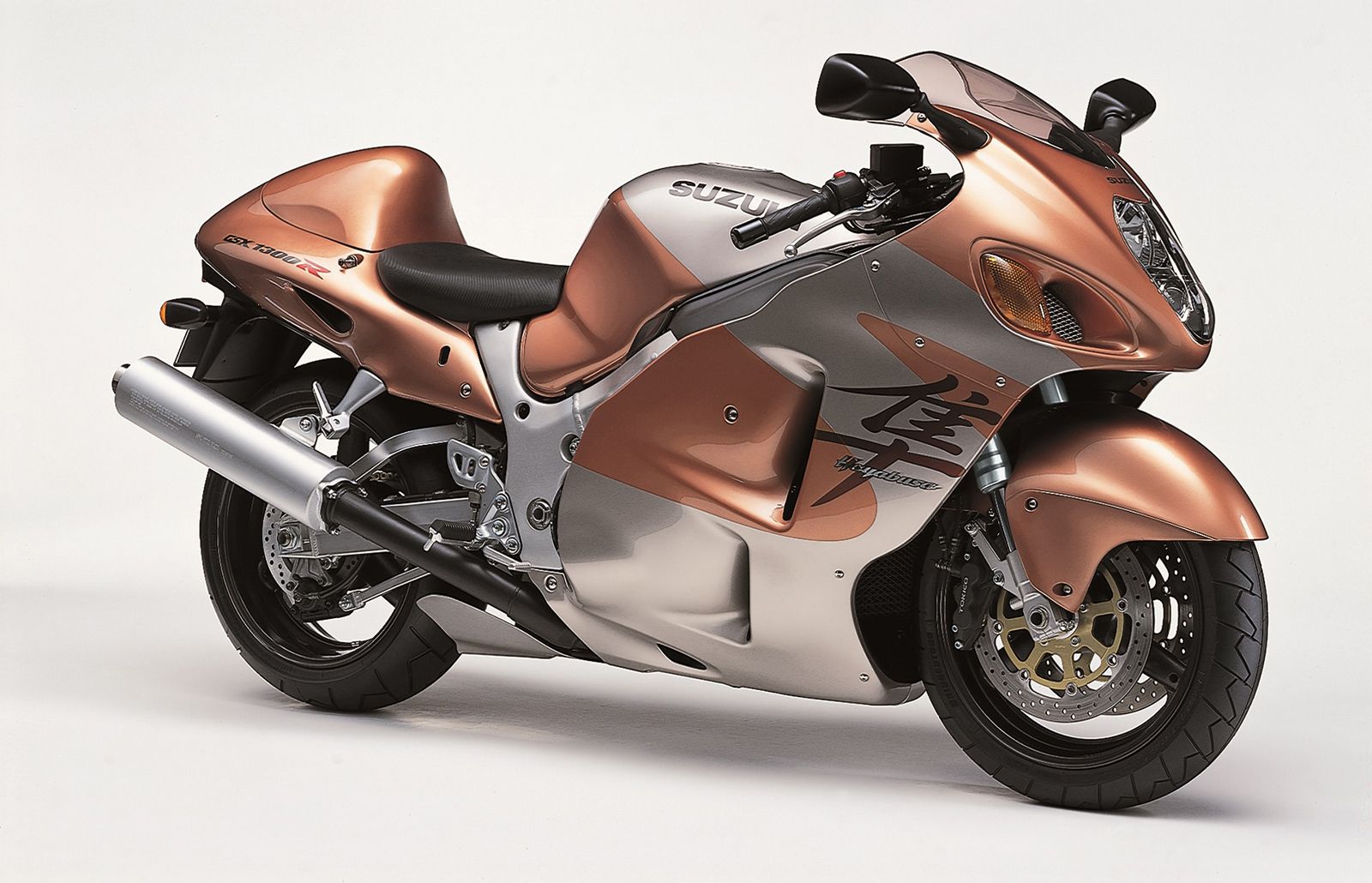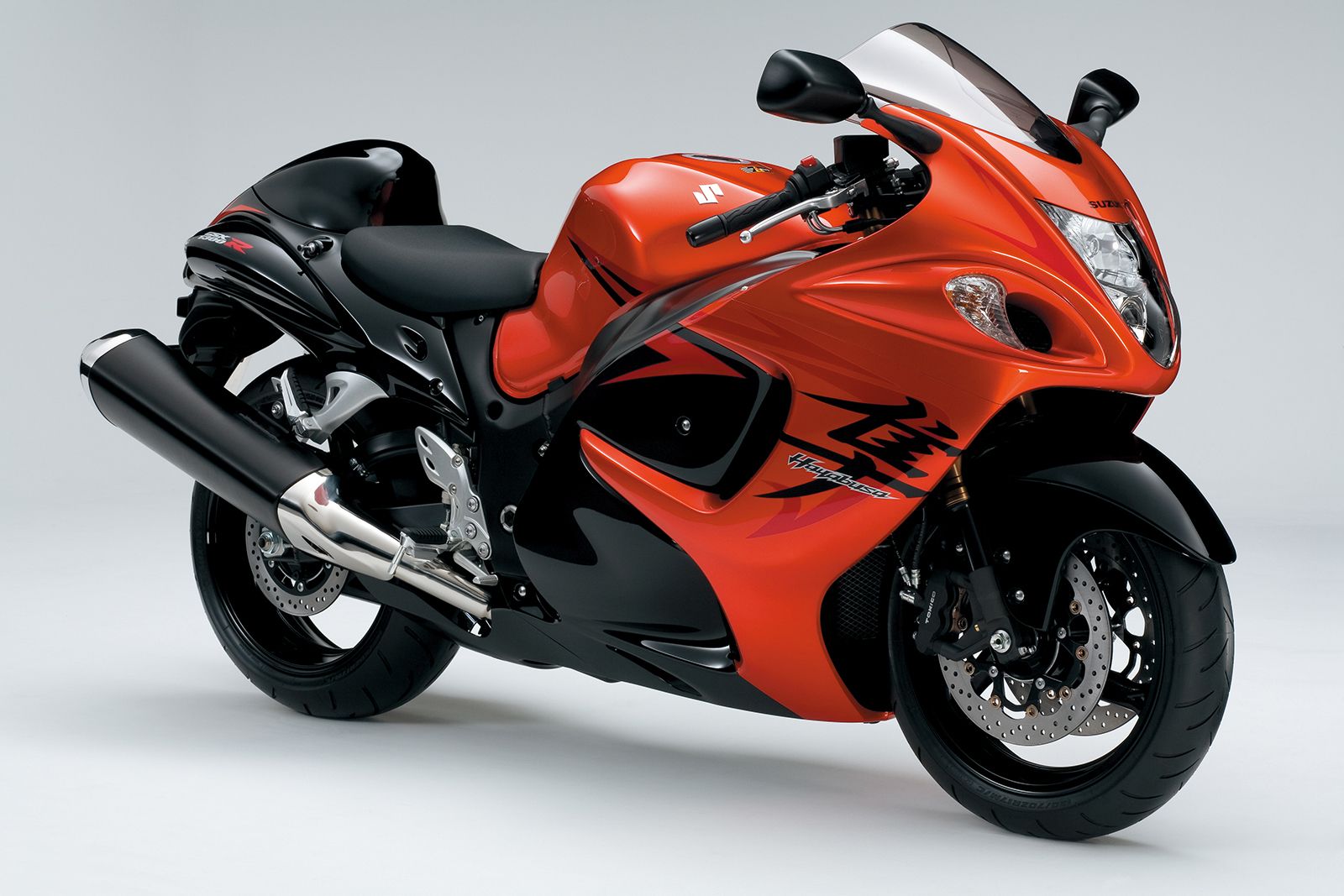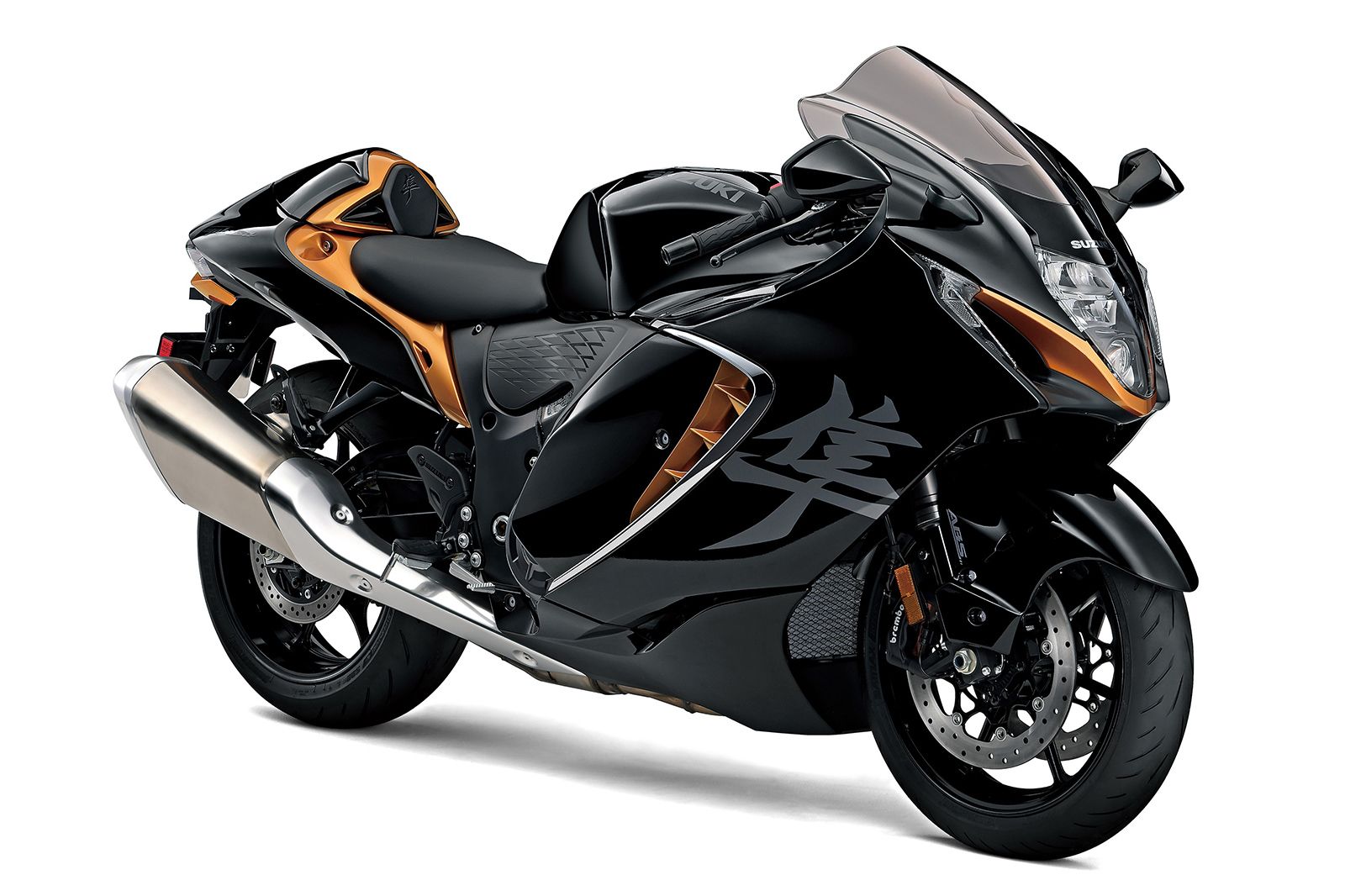Resume
- The 25th Anniversary Suzuki Hayabusa is a visually stunning motorcycle that pays tribute to 25 years of excellence with special colors and logos.
- Despite the lack of major engine modifications, the Hayabusa still packs a punch thanks to its 1,340cc inline-four and improved low- and mid-range power delivery.
- The Suzuki Hayabusa has a rich history, breaking speed records, is a consistent sales success and is used in motorsport competitions and in police units.
Hayabusa is 25 years old. Note that you do not need to add Suzuki when do you say hayabusa? Hayabusa is a mononym like Elvis is a single word that defines a person or thing. The Suzuki Hayabusa defines the pinnacle of fast bikes, cutting edge performance as a speed demon so brutally powerful that few riders can come close to matching its best performance.
Hayabusa also means Peregrine falcon in Japanese, the fastest bird, but after 25 years, perhaps Peregrine falcon can also mean “very fast motorcycle”. To celebrate a quarter of a century of this iconic motorcycle, Suzuki has released a special edition Hayabusa. It’s cute. We delve into 25 years of bike excellence to show how the mighty Hayabusa helped fuel superbike culture around the world and beyond.
The technical and historical data used in this article is taken from the official Suzuki Cycles US website, the press center and the global Suzuki website.
2024 Suzuki Hayabusa 25th Anniversary Model: Unique Features
Starting MSRP: $19,599
The 25th anniversary of the Suzuki Hayabusa is a visual feast a motorcycle known for its technology, power and speed. This special edition motorcycle is mechanically identical to the model that preceded it. Maybe it’s because you can’t improve on perfection.
Visually, the Anniversary model is quite stunning – so much so that it could be the collectible model of the year. The combination of psychedelic light orange glass and shiny black glass returns to the popular 2nd generation model.
The brake rotor carriers are gold anodized and the Anniversary logo is engraved on each muffler. There is an embossed Suzuki logo on the fuel tank, as well as a Hayabusa Kanji logo on the drive chain plate. A single hood is also standard.
Suzuki celebrated the machine that defines performance and technology by painting its beautiful colors with logos. This is called marketing. Bikers tend to look at what’s under the paint and how it will look on the road.
2024 Suzuki Hayabusa 25th Anniversary Features
|
25th anniversary emblem on the fuel tank |
|
Black molding on the hood |
|
Special V-shaped sticker |
|
Single hood as standard equipment |
|
Thick sticker with Suzuki logo on the fuel tank |
|
Hayabusa Kanji logo on drive chain |
|
Gold anodized inner brake rotor |
|
25th anniversary logo on muffler |
|
Special V-shaped sticker |
|
Anodized gold chain adjuster |
2024 Hayabusa 25th Anniversary: Engine and Performance
Maximum power: 186.7 hp
The 25-year-old Hayabusa has not received any major engine modifications. It continues to be powered by the famous 1340cc inline engine, the same as the standard 2024 Hayabusa. Suzuki improved the Hayabusa’s low- and mid-range power delivery with modified electronic throttle bodies with 43mm tapered bores and a 12mm high-flow intake system.
A total of eight fuel injectors work together on the 2024 buses to deliver an additional 2% of mid-range torque. Although slightly softer than the previous generation Hayabusa, the current generation model still has “too much power”. Hence, it is supported by the Suzuki Intelligent Ride System (SIRS) to help the rider tame this wild Japanese superbike with adjustable power modes, launch control and Motion Track ABS.
2024 Suzuki Hayabusa Engine Specifications
|
Configuration |
4-stroke, liquid-cooled, four-row, DOHC |
|
Moving |
1340 cubic meters |
|
power |
186.7 hp |
|
A turning point |
110.6 lb-ft |
|
Equipped mass |
582 pounds |
Milestones of the legendary Hayabusa over the years
World speed record
- At the launch, the Suzuki Hayabusa broke the Honda CBR1100XX Super Blackbird’s speed record by 14 mph, the fastest ever.
- The top speed of the original Hayabusa was 294 mph – still in the club of fastest production motorcycles. Before anyone starts screaming, take a look below.
- In 2000, under pressure from European and other international governments, Japanese and European manufacturers agreed to limit the top speed of their hyperbikes to 186 mph, a limit that is still in place. The Hayabusa production world speed record is frozen by legislation and industry self-regulation.
Hayabusa sales
Competitive motorsport
- Suzuki Hayabusa is suitable for extreme modifications for motorsport and setting records. It was used in sanctioned closed circuit racing, drag racing and top speed competition.
- The Hayabusa exceeded 270 mph, achieved over 700 hpand ran the quarter mile in 6.9 seconds and 209 mph.
- In 2011, a heavily modified Hayabusa set a new motorcycle land speed record of 311 mph from a standstill to 1.5 miles.
Using the police
- In 2006 The Oklahoma Highway Patrol converted a confiscated Hayabusa into a highway patrol motorcycle with radar, police lights, siren and special painting. It was used mainly for public relations, especially to communicate with the sports cycling community.
- Police in Humberside in the UK have been using Hayabusas as undercover motorbikes for speed enforcement.
- The Hayabusa was introduced as a superbike in Puerto Rico in 2021.
Suzuki Hayabusa models: evolution over 25 years
Suzuki Hayabusa Launch; First generation (1999 – 2007)
The Suzuki Hayabusa was released in 1999, when all major motorcycle manufacturers were chasing the best global recognition. The Hayabusa – Peregrine – was built specifically to displace the very special Honda CBR1100XX Super Blackbird as the world’s fastest production motorcycle. The peregrine falcon is known for hunting blackbirds. The Hayabusa was built for extreme speed, and that dictated the design. The press initially called it ugly. The radical copper-brown and silver two-tone work didn’t help much at first.
The front part of the fairing was curved and protruded above the front wheel. This, along with the large, eyebrow-shaped fender, made the front wheel short and fat, and the bike heavy. Two large air ducts on the fairing squeezed the headlight and windshield inward and upward like a face lift. The hood behind one seat was hump-shaped and appeared to be glued on.
Everything changed as soon as the reasons for this form became obvious. When “Busa” started breaking records, the look became logical, and even the paintwork was considered iconic. The Hayabusa had a 1299cc, 16V, DOCH inline-four engine. Although the engine was similar to other high-speed motorcycles of the era, it produced a record 173 hp. The large air ducts in the fairing were a pressurized air system that delivered cool air under pressure to the engine at high speed. This, along with the motorcycle’s sophisticated aerodynamics, gave the Hayabusa such an advantage that it broke the previous speed record by a huge margin compared to the incremental stages up to that point.
Second generation Suzuki Hayabusa (2008 – 2020)
In 2008, the second generation Hayabusa was released. This was mainly due to stricter emissions regulations, but also because the original Hayabusa was starting to look a bit dated in the competitive market. The body was updated and restyled, although aerodynamically it was almost identical. Market research found that bikers liked the look of the first Hayabusa, but often improved it with styling modifications. The designers visited the club scene in the States to explore this design ethic and the environment in which it was created.
The new look has been described as more masculine, although perhaps refined would be a better description. The Busa still had the big nose and massive wing, but the air intakes were neater and the headlight looked better. The combination of devices became more compact, and the exhaust got a smoother transition from thin to thick. The engine was tuned, not rebuilt, although it did increase power significantly. The main changes concern the engine head, pistons and exhaust.
Suzuki Hayabusa third generation (2021 – present)
In 2020, Suzuki had to adapt the engine to the new Euro 5 emission standards and used the opportunity to slightly change the appearance of the Hayabusa. This is the kind of motorcycle we have today. The front part of the fairing has become sharper, and the rear has been smoothed out and has become a little smoother.
The big change was in the engine. Previous emissions standards could be achieved by reducing them during exhaust, but the new ones required reductions in the engine during combustion. However, any power loss was more than compensated for by better electronics, including throttle and anti-wheel controls, all of which are included. Suzuki Intelligent Ride System. The new Hayabusa has faster acceleration than its predecessors.
Sources: Suzuki archive, Dealer news in the archive
